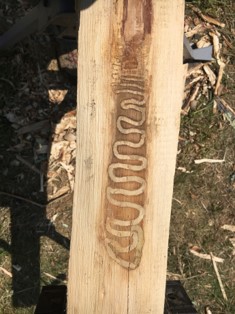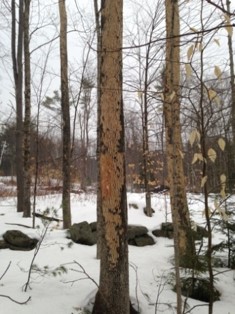Natural spread of emerald ash borer (EAB) takes decades; human-assisted spread takes only hours.
Following best management practices will help protect ash woodlots across New Hampshire and provide valuable time to managers and scientists looking for new control methods.
EAB was discovered in New Hampshire for the first time in 2013. While EAB has spread into most of NH’s counties, it still infests a very small percentage of the state’s total ash trees. Close attention to practices described on this card will help keep the outbreak from killing trees for decades.
How to help minimize risk of spreading emerald ash borer in New Hampshire
When moving ash logs:
Transport only after September 1 and have processed by June 1.
OR
Ship only to mills willing to debark immediately.
OR
Confirm logs are likely not infested (for the latest information on infested zones, expert contacts and training opportunities, visit NHBugs.org).
When moving firewood:
Remove ash wood from shipments traveling more than 5 miles; deliver ash wood less than 5 miles.
OR
Season ash wood at its place of origin for at least 12 months.
OR
Deliver ash wood after September 1 and make sure it’s burned by June 1.
NOTE: Mulch or chips of any size can be moved year round.
Signs of EAB infestation:


